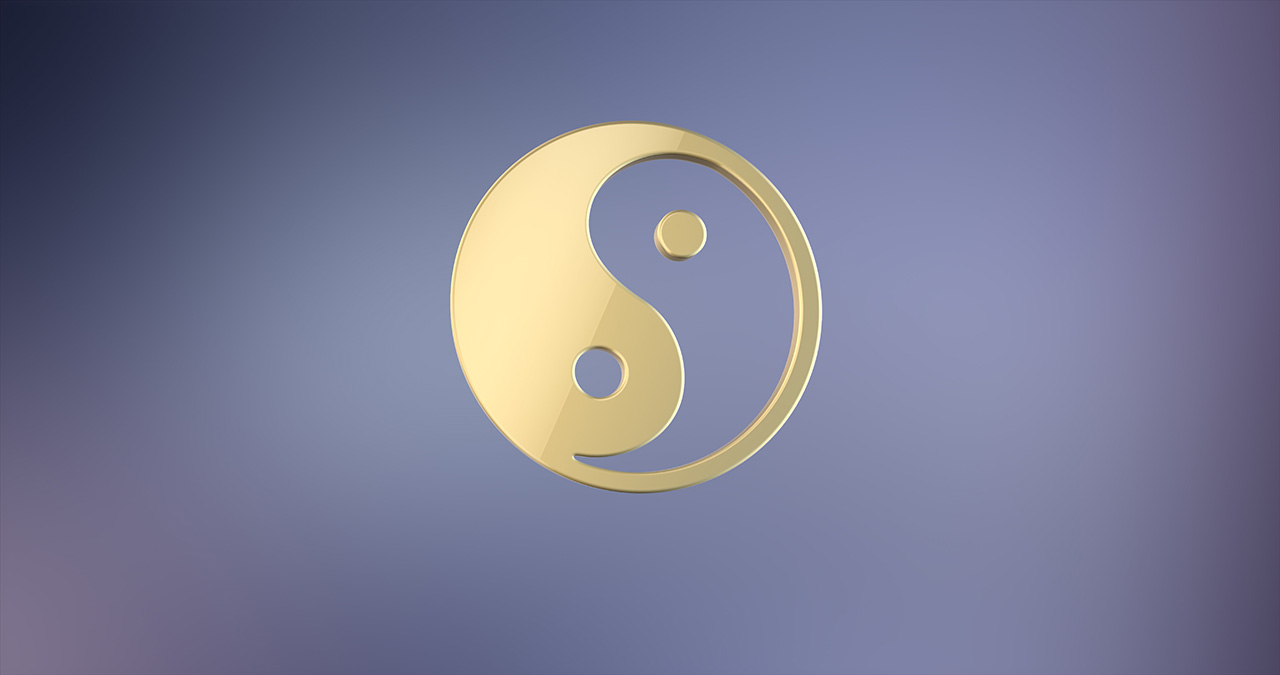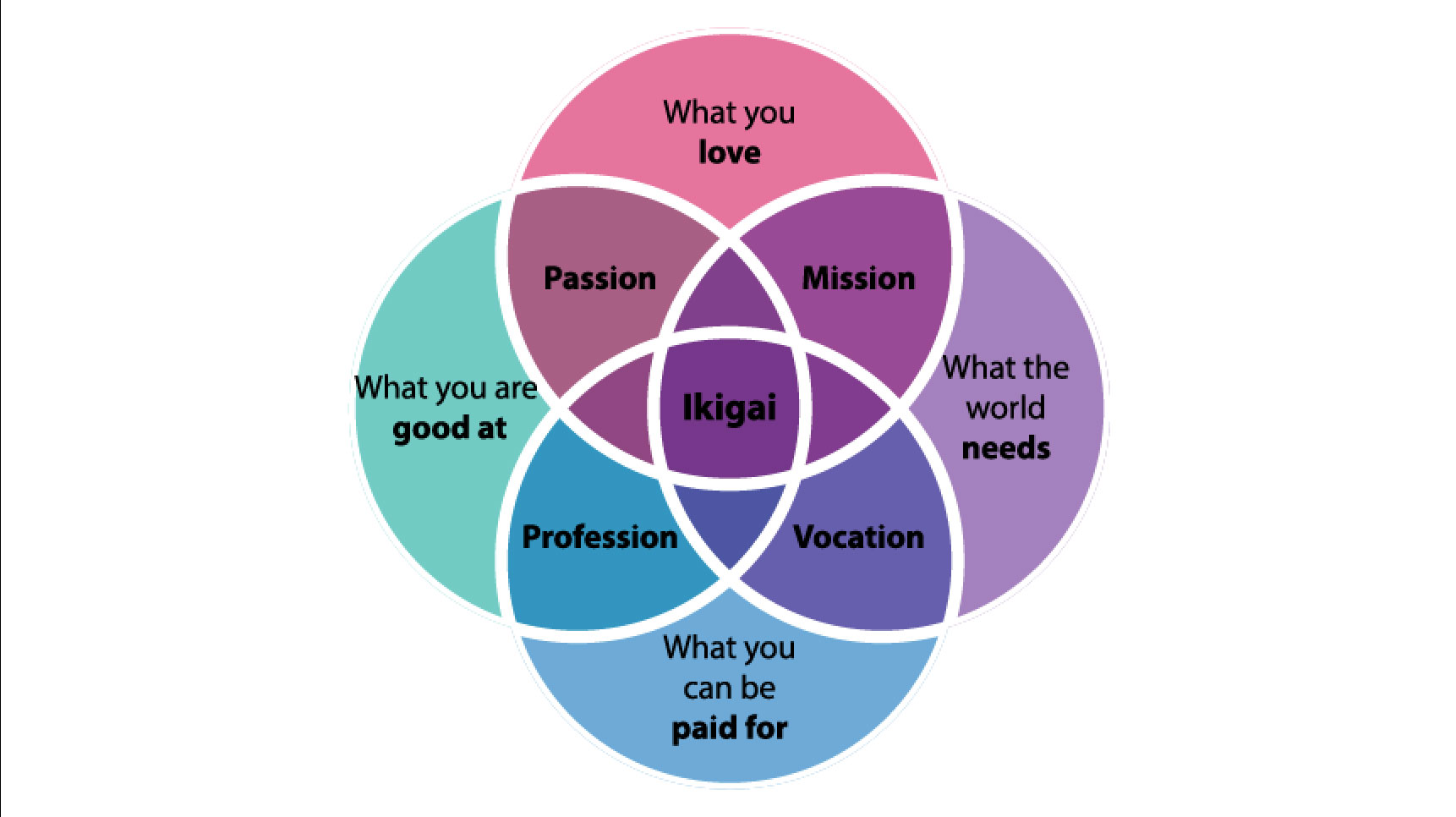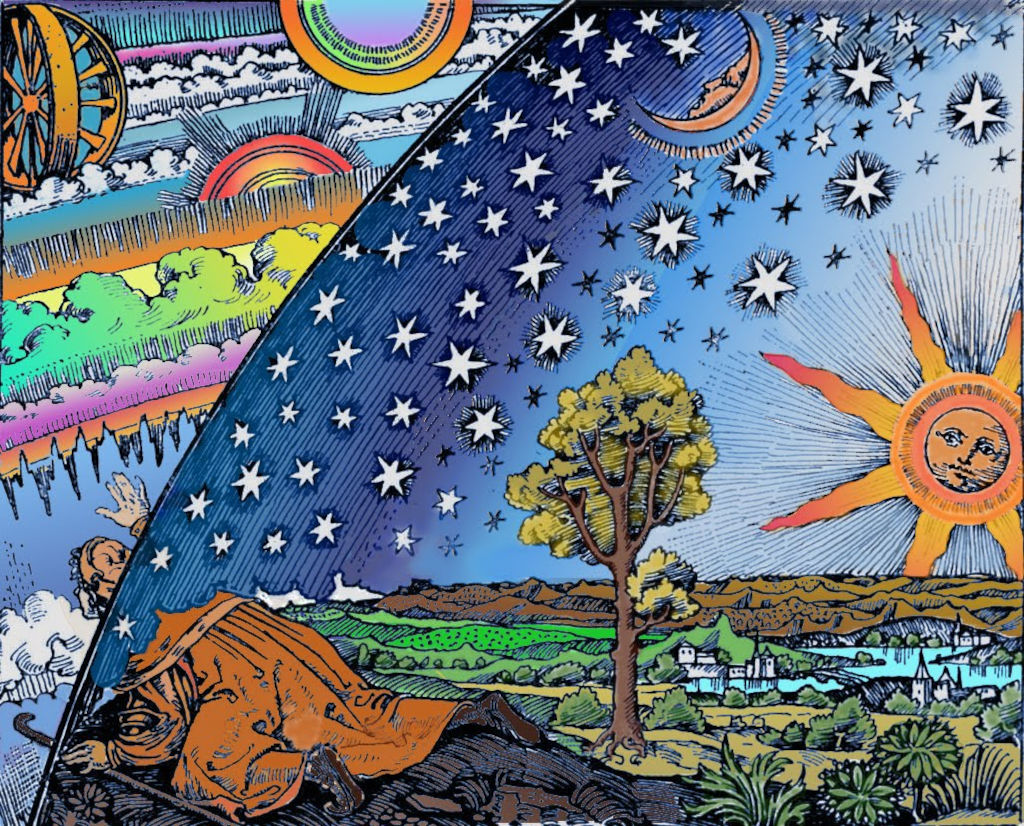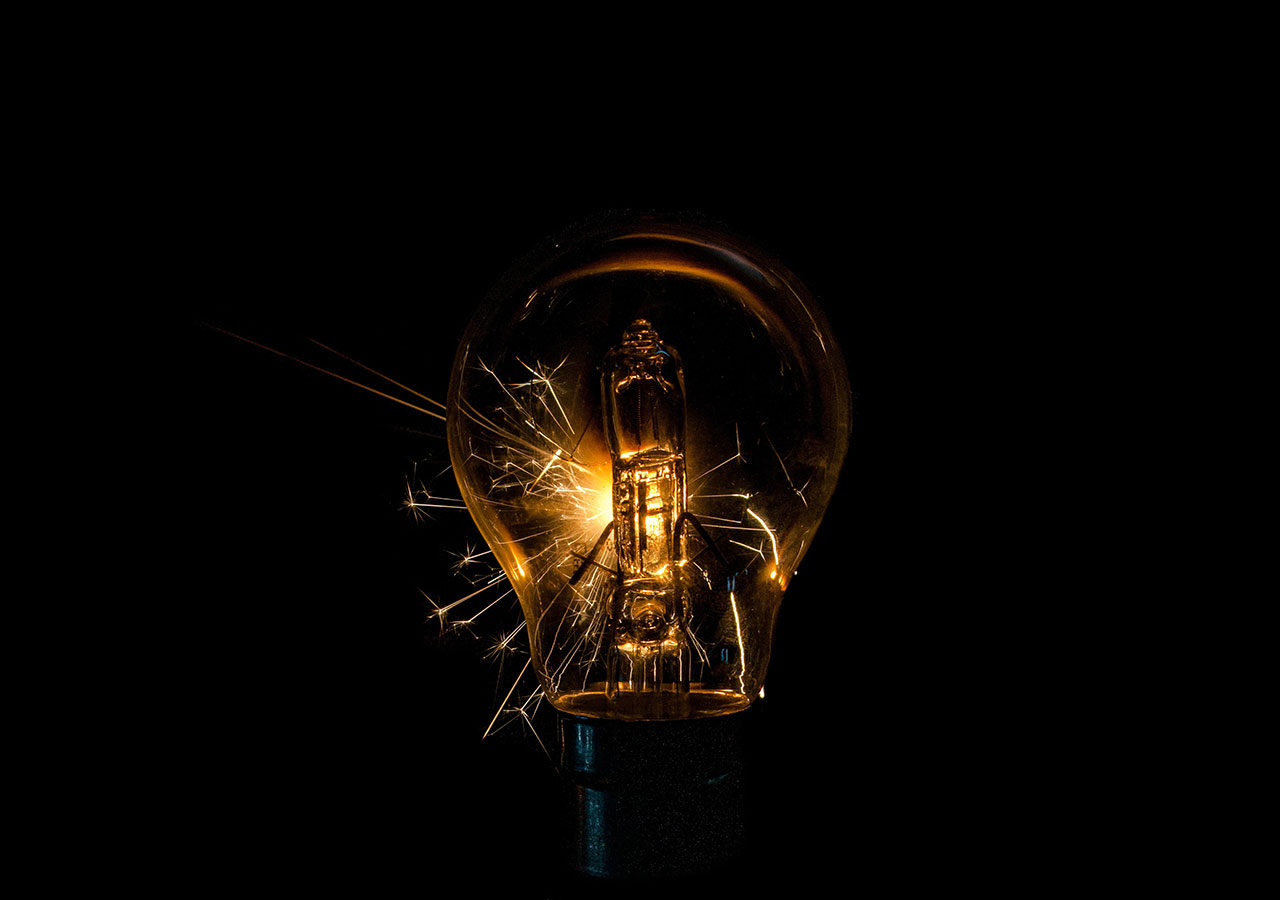Long before Mihaly Csikszentmihalyi developed Flow Psychology in the West, there were many similar philosophies in the East that were oriented toward the cultivation of optimal experience.
Rooted in the ancient teachings of the Vedas, Eastern Philosophy is much more oriented toward holistic awareness, intuitive knowledge and direct personal experience than Western Philosophy.
Here are some different conceptions of the philosophy of flow found throughout Eastern Philosophy.
1. Taoism: The Philosophy of Flow
The ancient Taoism wizard Lao Tzu’s legendary book the Tao Te Ching (The Book of The Way) goes deep into the philosophy of flow and the paradoxical nature of truth and wisdom.
He wrote about the power of natural rhythms and elemental forces, and the difficulty we have appreciating our interconnection with these dynamic forces since they are difficult to understand and communicate through language.
Here are some quotes from Lao Tzo that illuminate his Taoist philosophy:
“The Tao that can be spoken of is not the eternal Tao. The name that can be defined is not the unchanging name.”
“Those who flow as life flows know they need no other force.”
“The flame that burns Twice as bright burns half as long.”
“Life is a series of natural and spontaneous changes. Don’t resist them – that only creates sorrow. Let reality be reality. Let things flow naturally forward in whatever way they like.”
“If you correct your mind, the rest of your life will fall into place.”
“If you realize that all things change, there is nothing you will try to hold on to. If you are not afraid of dying, there is nothing you cannot achieve.”
“If you are depressed you are living in the past. If you are anxious you are living in the future. If you are at peace you are living in the present.”
Another Taoist philosopher who explores the philosophy of flow is Chuang Tzu.
He argues that what we call happiness is nothing more than we wei (non-action or effortless action), which means using one’s natural abilities and intuition to flow with one’s environment.
When we are fully engaged with what we are doing, we begin to act effortlessly. For Taoists, the practice of meditation and mindful observation of thinking helps shift our mindset from that of fear and avoidance to a way of being characterized by deep embodiment and openness.
Here are some good quotes about the Tao of Flow from Chinese master Chuang Tzu:
“Flow with whatever may happen, and let your mind be free: Stay centered by accepting whatever you are doing. This is the ultimate.”
“Rewards and punishment is the lowest form of education.”
“Happiness is the absence of the striving for happiness.”
In Taoist philosophy, there is an emphasis on the paradoxical nature of truth. To gain a deeper understanding of reality it is necessary to meditate daily and train the art of wu wei or non-action.
In the Taoist worldview, real knowledge is achieved not through the effort of mind but through direct contact with reality. Such experience can arise in a meditative state when thoughts are cleared away so spiritual insight can emerge from the depths of consciousness.
The experience of flow consciousness through meditative practices like Tai Chi and Qigong involves embodying the rhythm of your breathing and observing the world around you mindfully without judgment, identification, or resistance to the natural flow of awareness.
This helps to develop a more intuitive way of knowing. Here’s a great video exploring the philosophy of flow in Taoism.
2. Zen Buddhism: The Art of Flow
The philosophy of Zen is a celebration of the beauty, symmetry, and elegance of natural forms and the practice of seeing more directly with a beginner’s mind.
One of the most famous modern practitioners of Zen Buddhism was Apple Founder Steve Jobs. On his regular trips to Tokyo in the 1980s to source computer parts, he discovered the walled gardens of Japan’s Zen monasteries and there he developed a lifelong practice of Zen meditation.
His favorite book was actually Zen master Shunryū Suzuki legendary text Zen Mind, Beginner’s Mind and a copy of the book in a black box was given to everyone who attended his funeral.
In Zen Buddhism, there is the concept of Mushin, which translates as “no-mind” or “empty mind”.
Mushin is a highly conscious state where the mind is not preoccupied with any thought or emotion.
The mind becomes empty in the sense that it is unbiased, free and adaptable.
A good example of someone who embodied Mushin was Kung Fu Legend Bruce Lee.
His philosophy of life and disciplined practice of ancient martial arts embodies the essence of Mushin.
Another particularly articulate and entertaining philosopher of Zen Buddhism, Taoism and Eastern Philosophy was the scholar and self-proclaimed spiritual entertainer Alan Watts.
He speaks of life as flow and a dance of pattern. His talks often hilariously challenge the fixed mindedness and poor adaptability of people who are stuck in the rut of dogmatic thinking and self-righteousness.
Here are some Alan Watts quotes about harmonizing yourself with the flow of life and living more in harmony with nature:
“This is the real secret of life — to be completely engaged with what you are doing in the here and now. And instead of calling it work, realize it is play.”
“To have faith is to trust yourself to the water. When you swim you don’t grab hold of the water, because if you do you will sink and drown. Instead you relax, and float.”
“Muddy water is best cleared by leaving it alone.”
“The more a thing tends to be permanent, the more it tends to be lifeless.”
“A man does not really begin to be alive until he has lost himself, until he has released the anxious grasp which he normally holds upon his life, his property, his reputation and position.”
“We are living in a culture entirely hypnotized by the illusion of time, in which the so-called present moment is felt as nothing but an infintesimal hairline between an all-powerfully causative past and an absorbingly important future. We have no present. Our consciousness is almost completely preoccupied with memory and expectation. We do not realize that there never was, is, nor will be any other experience than present experience. We are therefore out of touch with reality. We confuse the world as talked about, described, and measured with the world which actually is. We are sick with a fascination for the useful tools of names and numbers, of symbols, signs, conceptions and ideas.”
In this video, he speaks about the art of flow from the perspective of the Zen Buddhist tradition.
Here, he goes even deeper into how anxiety and clinging to certainty creates the resistance that blocks the experience of flow.
3. 8 Limbs of Yoga: The Union of Samyama
Samyama is a Sanskrit term which describes the uppermost three limbs of Raja Yoga as outlined in Patanjali’s Yoga Sutras.
Nearly 80% of the world’s Indo-European languages go back to the ancient language of Sanskrit and it remains the most mathematically precise and linguistically concise language, which essentially means the meaning of words don’t change over time.
Many modern languages like English are very flexible and evolve over time (it’s quite difficult to read Shakespeare in the unmodified old English of his time) but this also means that many spiritual teachings are modified or lost in translation from the ancient languages of their origin.
Sanskrit is the most ancient of languages and it is the script in which the Vedic library of knowledge is written, which pre-dates the biblical texts of Judaism and Christianity by thousands of years. Sanskrit also pre-dates Western languages like Hebrew, Greek, and even ancient Egyptian.
The first book of the Vedas called the Rig Veda is widely considered the world’s oldest religious text. Some historians and religious scholars believe it was likely passed down through rhythmic chanting for thousands of years before the invention of writing.
While most people who have taken a yoga class know a few of the lower limbs of Yoga, the study of the higher aspects of Yoga is rare even among modern yogis who teach in yoga studios.
Here are the Lower Limbs of Yoga:
1. Yama: Attitudes toward our environment.
2. Niyama: Attitudes toward our self.
3. Asana: The physical postures.
4. Pranayama: Restraint or expansion of the breath.
5. Pratyahara: Withdrawal of the senses.
These 5 Lower Limbs of Yoga form the foundation to establish yourself in the much more important and spiritually transformative power of the Higher Limbs of Yoga.
Built upon the practical knowledge of the lower limbs, the higher teachings of Yoga are very similar to flow.
The higher limbs of Yoga involve the simultaneous practice and experience of:
6. Dharana: Complete focus or concentration.
7. Dhyana: Meditation or contemplation.
8. Samadhi: Divine union.
While the lower of the 8 Limbs of Yoga taught by Patanjali help to purify the body, the prana life-force, and the senses; the higher limbs of Dharana, Dhyana and Samadhi purify the mind.
To be in Samyama is to be in a state where you have perfect control over the mind. In this state, the illusions that you are the body or the mind are said to fall away.
Sadhguru explains the essence of Samyama without sugar-coating it.
Another one of my favorite yoga teachers is Jeffrey Armstrong, who is a western teacher of eastern wisdom who has studied the Vedic knowledge for over 40 years.
He talks about the depths of the greatest teachings of India and the cultural influence worldwide of the Vedas.
He has an interesting way to explain the union of yoga and the flow of consciousness through technological metaphors that many people today that can closely relate to.
Maharishi Mahesh Yogi, who was the founder of the movement known as Transcendental Meditation also has a fascinating way of describing the value of Vedic knowledge.
Here, he talks about merging all channels of knowledge into one single Enlightened awareness as the goal of Vedic Education.
How Do You Train Your Mind?
How has your study of eastern philosophy inspired you to change the way you live, create, or think? Please share your insights and experiences in the comments.
Given that the foundation of achieving a flow state is being highly focused on a challenging and meaningful task, the vigilant training of the mind is of the essence.
A well-trained mind in the right meditation tradition for your disposition is the best method I’ve found for dramatically increasing your daily experience of flow.




